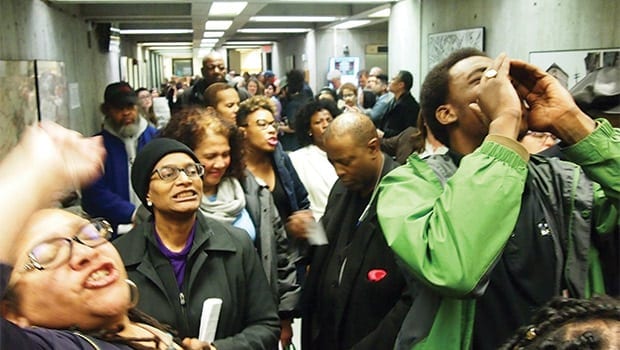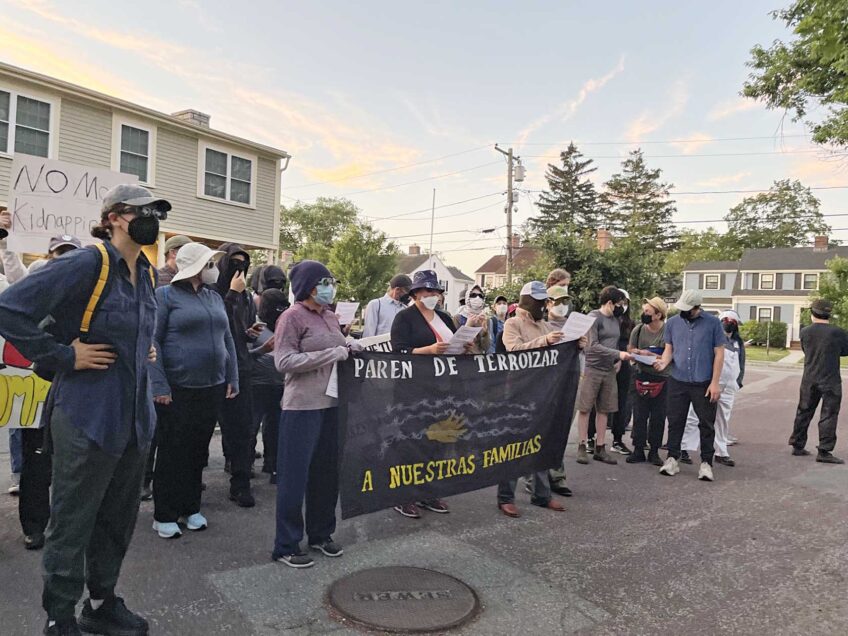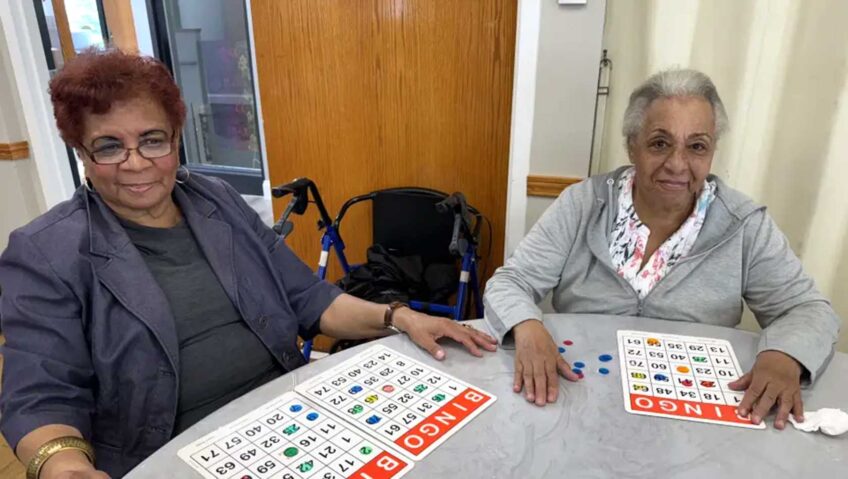Plan JP/Rox passes after protests
Activists say plan will bring displacement

The city’s Plan JP/Rox proposal passed last week, despite bitter controversy and well-publicized protests by resident groups who said it puts at risk their ability to stay in Boston.
Activists demanding greater housing affordability held a three-day rally at City Hall, with some members sleeping overnight during the days leading up to the vote. Last Thursday, the Boston Planning and Development Agency board gathered to evaluate the plan in a meeting that had no public comment period but was frequently interrupted by protestors who shared personal stories of struggling to remain in the neighborhood and called for the plan to provide a greater amount and depth of affordable housing in order to stem what they fear will be mass displacement. At times, demonstrators’ chanting drowned out speakers’ presentations.
As demonstrators expelled from the meeting and others who were unable to enter the packed room chanted in protest outside, BPDA officials took their vote. Board members approved the city’s JP/Rox plan which will guide the next 15 years of development in a triangular area bounded by Jackson Square to the north, Egleston Square to the east and Forest Hills to the south.
Several activists told the Banner they regarded the days and hours before the vote as their last chance to bring more affordability into the plan. They said the plan’s definition of affordable did not match what most local residents earn.
“We’ve been pushing for the plan to have more affordability for well over a year,” said Danielle Sommer, member of Keep It 100 for Real Affordable Housing and Racial Justice, during last week’s protests. “[The BPDA vote] really shuts down any ability to add more affordability into the plan.”
At the BPDA meeting, a 24-year-old Mattapan renter said he had been priced out both of Jamaica Plain and Roxbury. Other activists attested that the tide of displacement is tugging at the neighborhood.
“All of my neighbors are leaving and I’m getting new neighbors who don’t talk to me,” Lisa Profumo, who has owned a home in Egleston Square for 40 years, told the Banner during sit-in protests.
Meanwhile city officials said financial realities tie their hands. Sheila Dillon, director of the Department of Neighborhood Development, said that the city is reliant on private developers for funding much of its affordable housing, and so must be careful not to deter their interest, while also preserving affordability and protecting populations.
Activists’ three stated goals for the plan were to deepen the affordability level on designated affordable housing units so that they are attainable by households making less than $35,000 per year; increase goals for the portion of new housing that’s designated as affordable from 36 percent to 55 percent; and require the conversion of 250 market-rate units into affordable units. They say the 64 percent of new units offered at market-rate under this plan will be unaffordable to anyone making below $75,000 — that is, 70 percent of the area’s residents.
Now that the vote has passed, activists are regrouping and evaluating possible next steps, Sommer said. In a statement issued on Tuesday, Keep It 100 said the BPDA had approved a plan that “will exacerbate the housing and displacement crisis and fuel the increasing wealth divide.”
Affordability levels and amounts
Sommer and other activists say that in an area where the average household income is $35,000, many designated affordable units are out of reach and only 5 percent of the new housing under the city’s plan is attainable by these income earners.
City Councilor Tito Jackson said the city should be well aware of this problem.
“What ends up happening is you say it’s an ‘affordable’ unit, but you know based on your own numbers that people in that community cannot afford to live in those units,” he told the BPDA.
During the first night of sit-ins, March 28, activists spoke with John Barros, city chief of economic development. According to Corey McMillan, a JP resident with Keep It 100, Barros told protestors he agreed that affordability definitions — which are federally set — do not match neighborhood realities.
But Barros and other city officials said their ability to demand more from private developers is limited. The revised JP/Rox plan would require 36 percent of new housing be affordable (40 percent if projects currently in permitting are included), whereas activist sought 55 percent.
“We’ve really pushed developers to do more [affordable housing] than they wanted to do,” Dillon said at the BPDA meeting. “36 percent affordability rate is higher than any neighborhood in city of Boston.”
Original plans called for 30 percent of new housing stock to be affordable, but was increased by 6 percent in response to pushback and feasibility analysis from community members.
Marie Mercurio, BPDA senior planner, said the city believes the solution to housing needs is to build enough units — including market-rate ones — to slacken housing demand and normalize rents.
Density bonuses
Another aspect of the plan is density bonus units — the additional affordable units that developers construct in exchange for permission to increase the building’s height above limits imposed by zoning.
Tim Davis, the city’s housing policy manager, said that here, the city is taking a risk by demanding such a high affordability level that it could scare off developers.
“We took a leap of faith,” Davis told the Banner. The number of assumptions involved in the city’s calculations make it difficult to determine exactly how many affordable units can be demanded without chilling the market, Davis said, but due to resident pressure, the city erred on the high side. “We’ve already stretched the boundaries [of what developers will accept].”
Under the draft Plan JP/Rox released in October 2016, developers are required to make 13 percent of their units affordable and those developers accessing the density bonus to create extra units must make an additional 4 percent of them affordable.
Both a study by a consultant and one using more localized neighborhood data said this 13 percent plus 4 percent of extra, “density” units figure was the maximum feasible, Davis said.
After being presented with different numbers and alternative assumptions, the city was persuaded to take a chance on requiring a higher percent of units be affordable, Davis said. Under the new policy, developers still have to designate 13 percent of units in a normal-sized construction as affordable, but provide a greater percentage of the density bonus units as affordable, with exact amounts depending on the square footage count of the density construction. For example, if developers double the original construction’s size, then 30 percent of density units built in the second half must be affordable.
Activists, however, take issue with the level of affordability of these units, saying they remain out of reach to local residents. The units are designated for those earning up to 50 percent of Area Median Income, or $49,000 for a family of four, while activists says a more realistic measure would be 40 percent AMI.
Conversion
The activists also aimed to secure a concrete commitment from the BPDA to convert a number of existing market rate units into affordable designation — something they said the BPDA agreed to but has yet to provide details on. Activists proposed 250 converted units but said lesser numbers still would be impactful.
Data divide
The dispute in part is a clash of numbers, with city assessments and activists’ analyses deviating on crucial conclusions.
Sommer says her group’s research suggests there are ways to make 40 percent AMI affordability economically viable. The group performed its own analysis of the data, and met with private developers, nonprofits, and land analysts to assess alternative plans, some of which she said do require creative approaches.
She expressed doubt that the city has a complete perspective. For instance, in its plan, the city presumes that residents currently living in deed-restricted affordable housing are safe from displacement, but in a number of cases, the long-term affordability designations are set to expire soon, Sommer says. Additionally, she said her group previously had to correct the Plan JP/Rox team’s analysis when an earlier model mistakenly regarded nonprofits as if they were private developments, altering affordable housing stock assessments.
Next steps
Davis said Plan JP/Rox is a living document and that after providing at least a year for its effects to emerge it will be revisted and re-evaluated for effectiveness.
Sommer said she believed community members’ voices were not heard and responded to in this planning process and said it sets a bad precedent for other neighborhood-focused plans.
“Plan JP/Rox feels like the canary in the coal mine,” she said.






